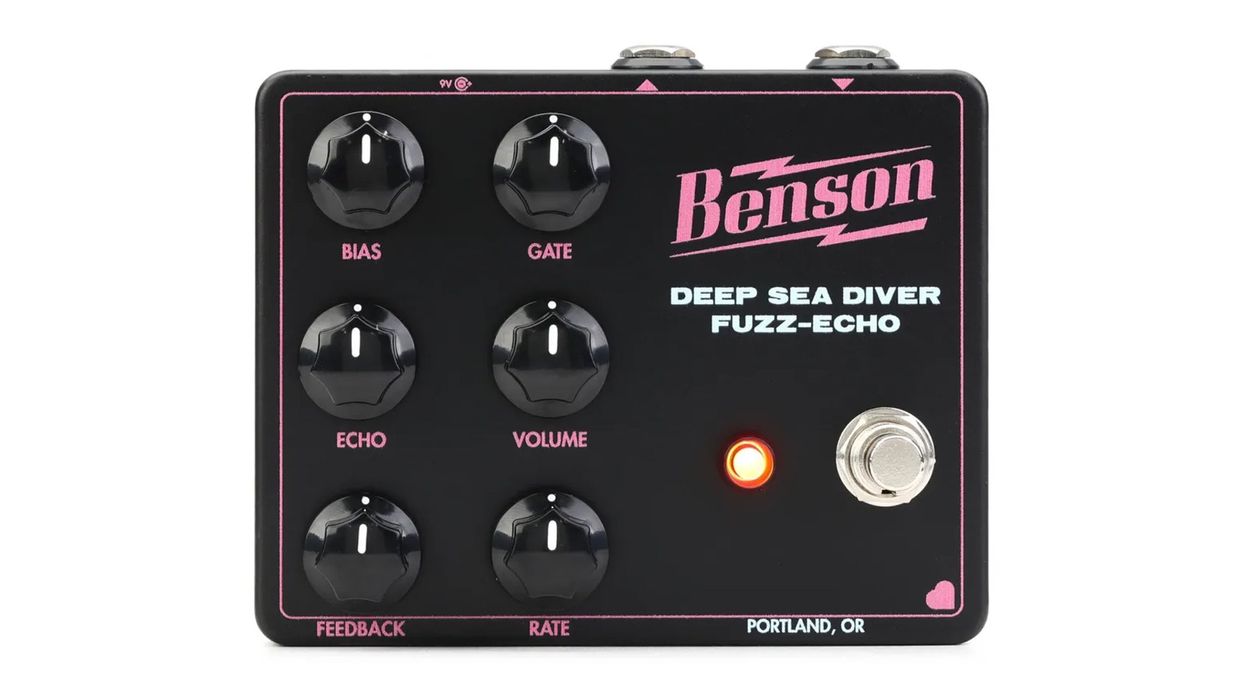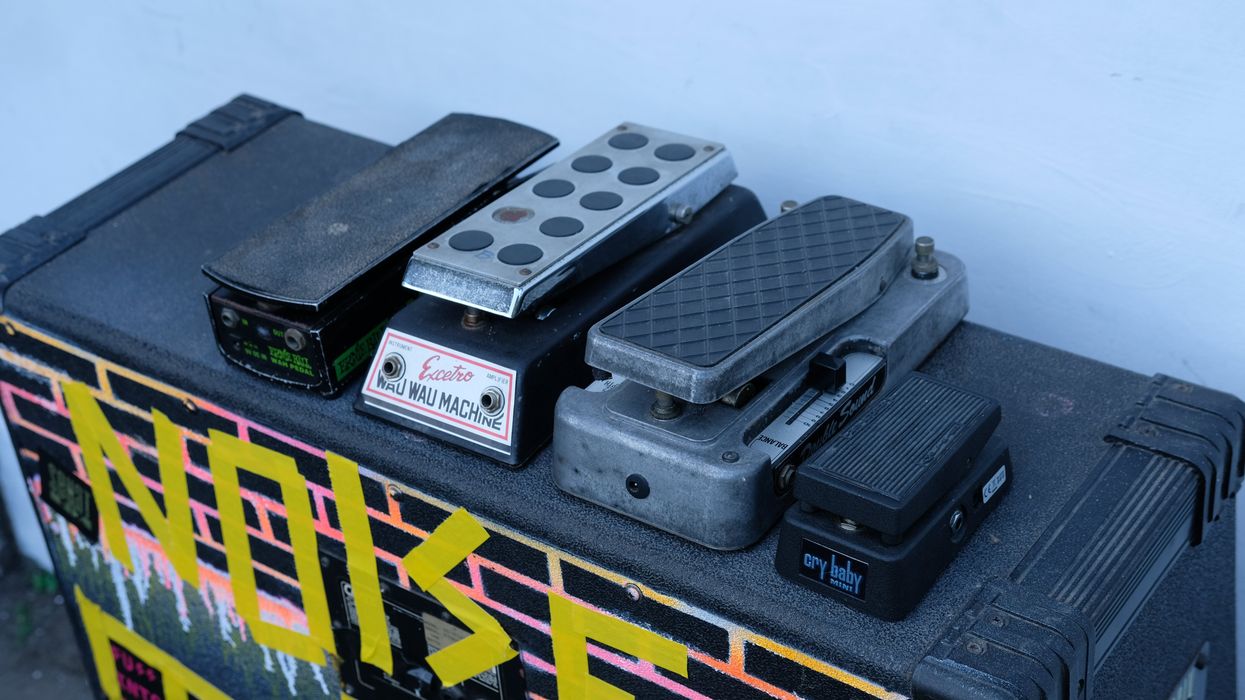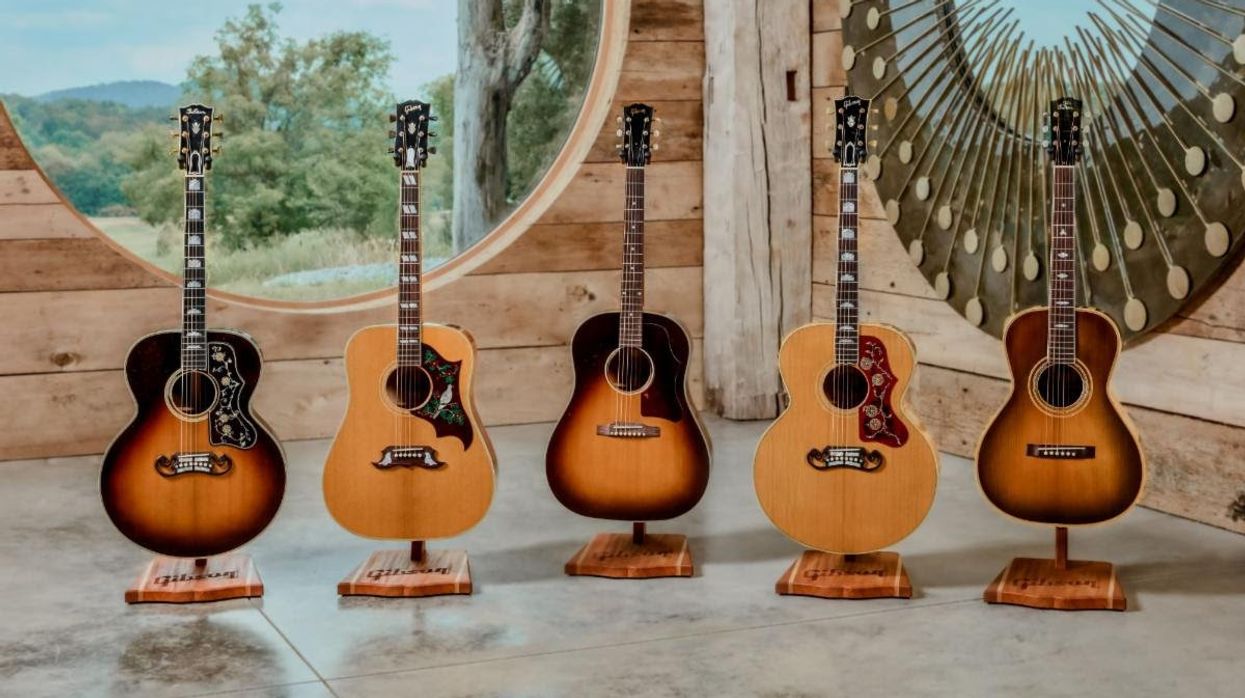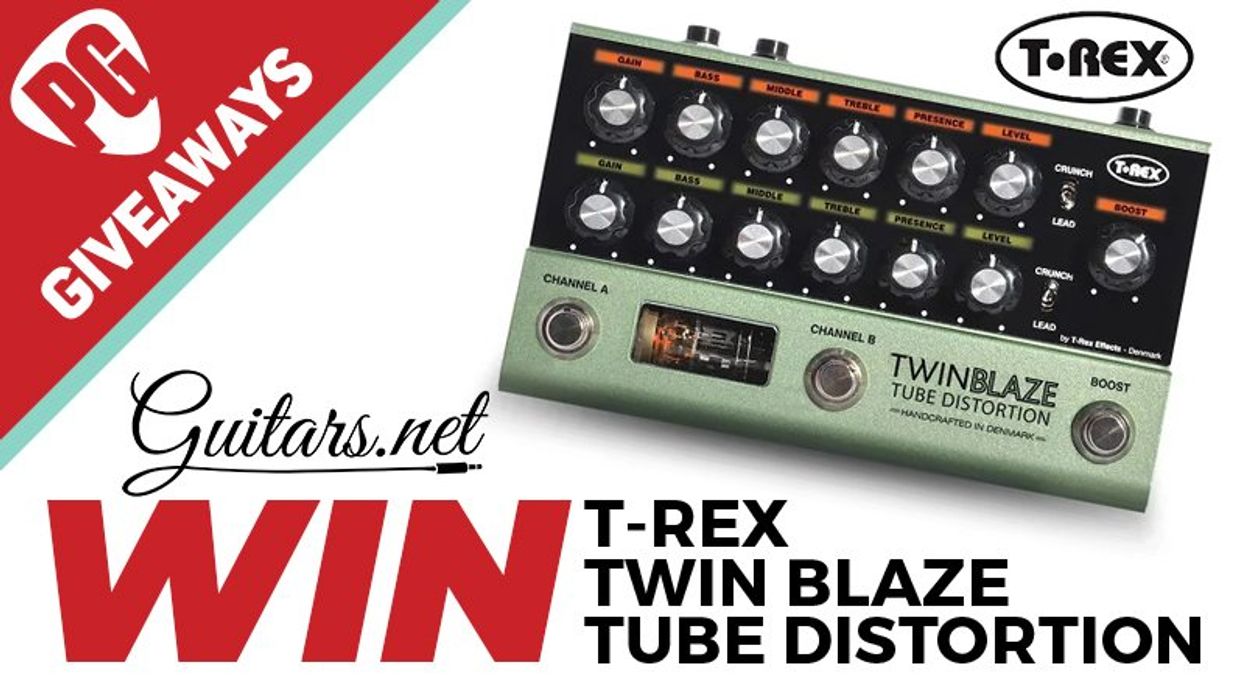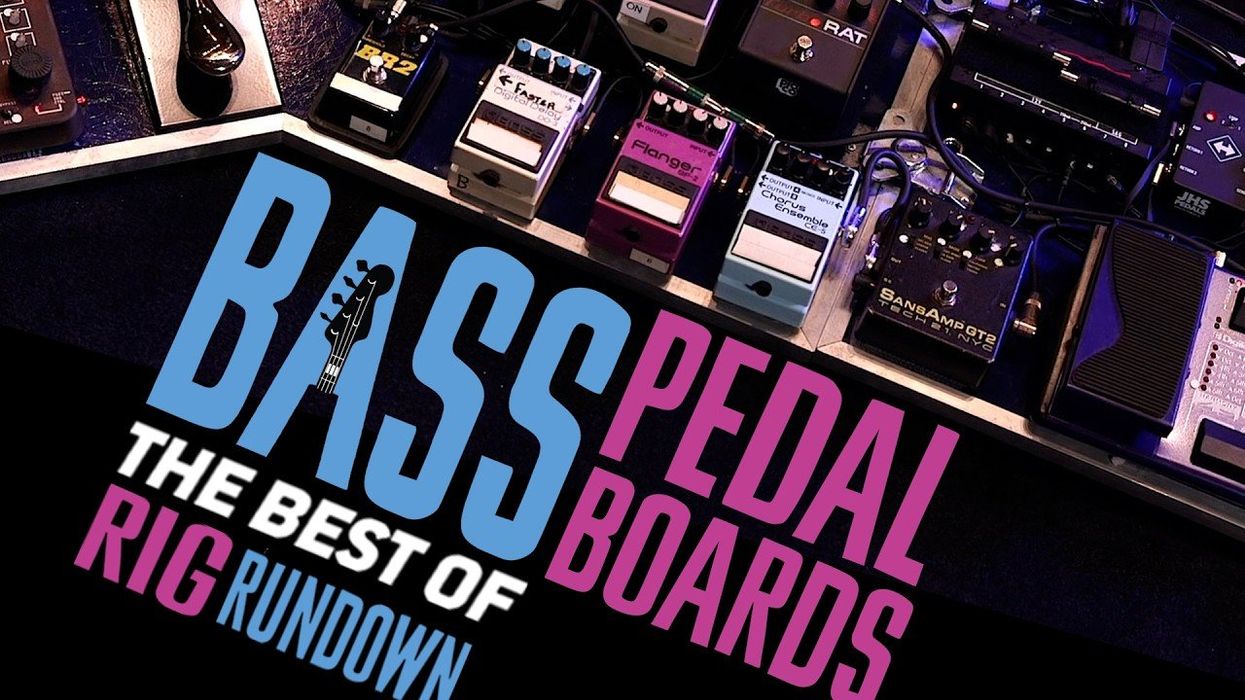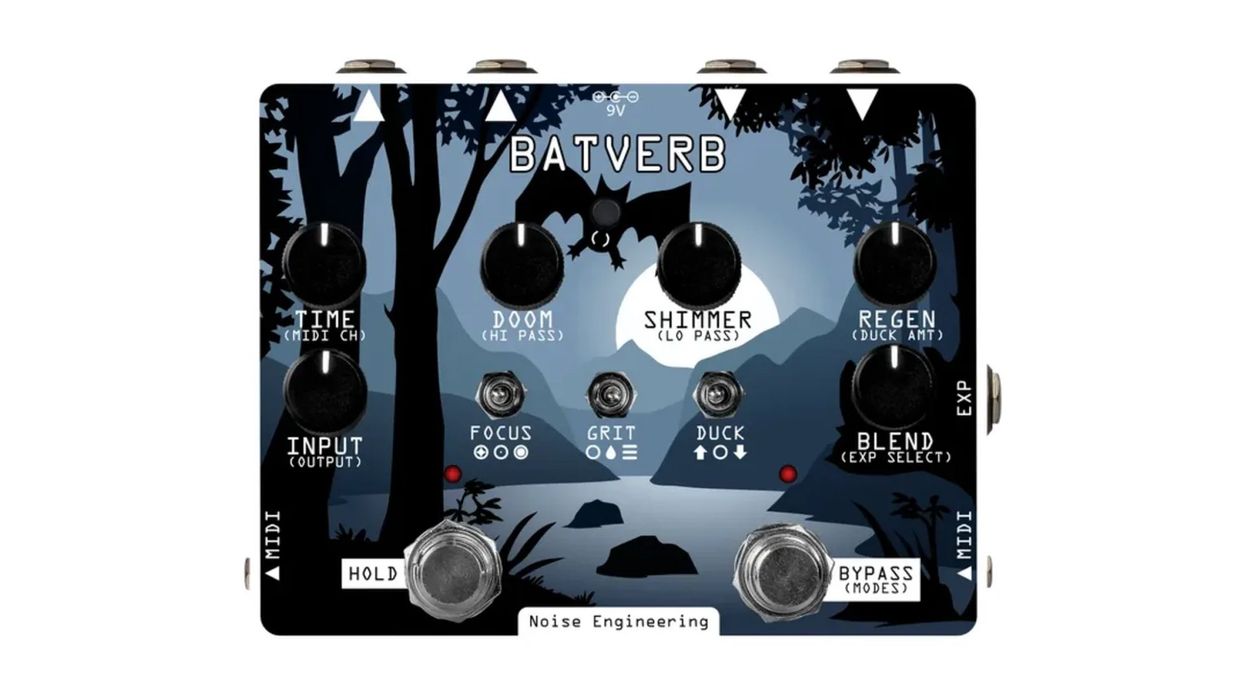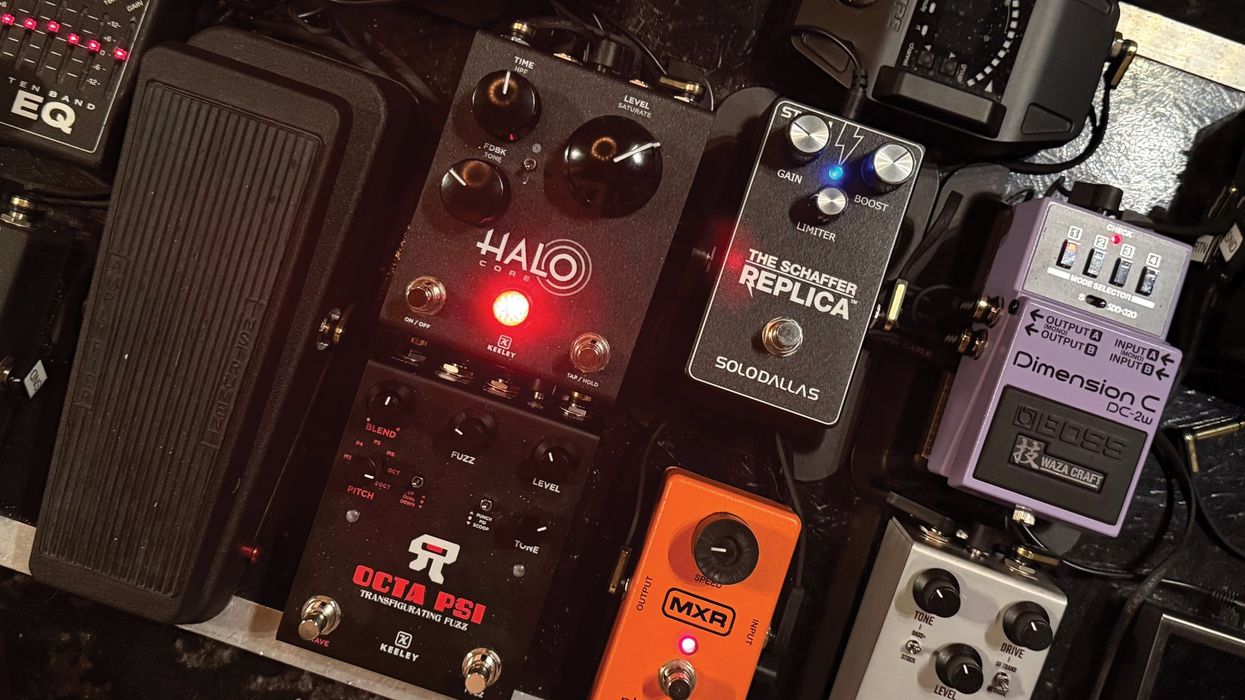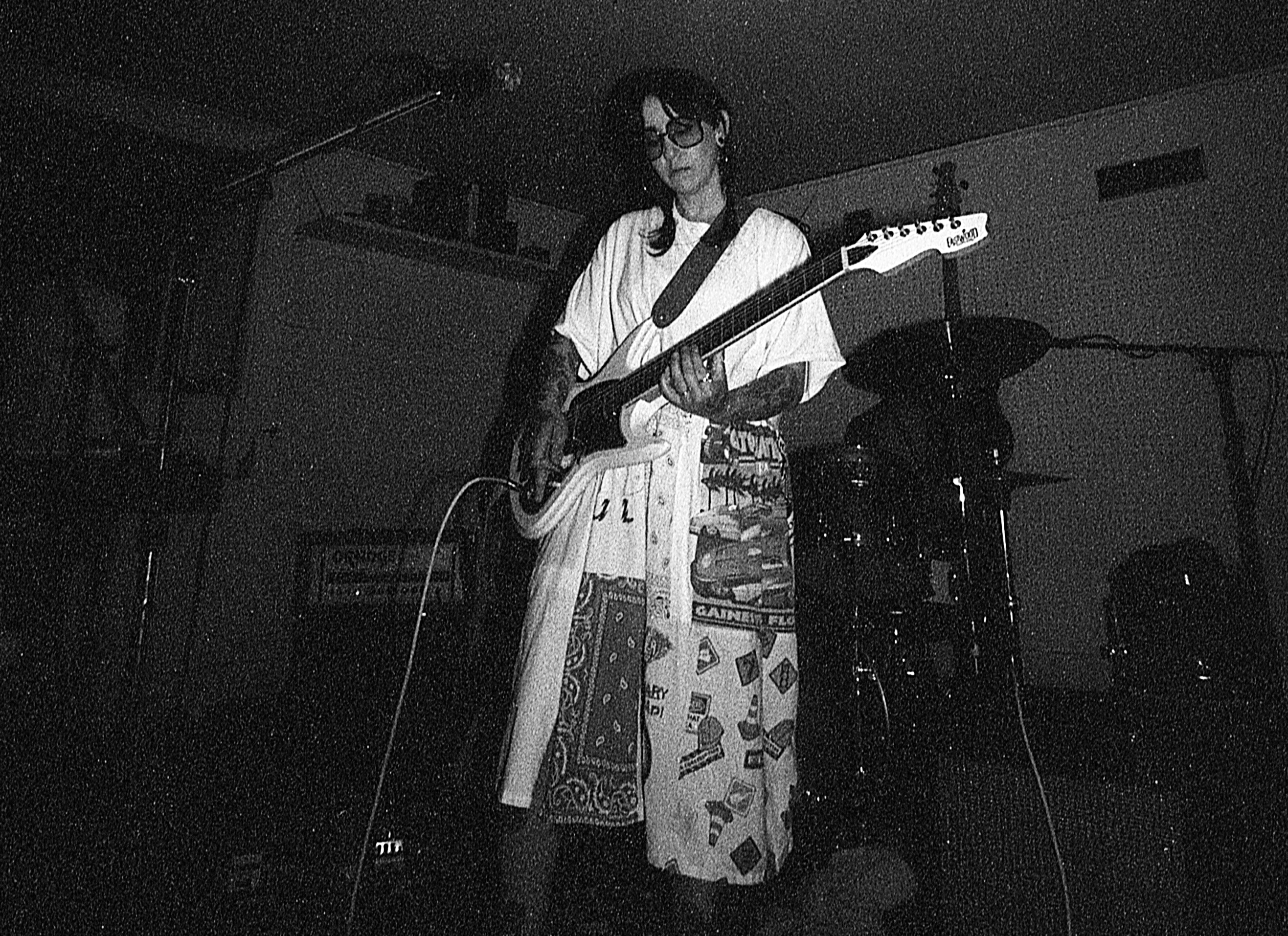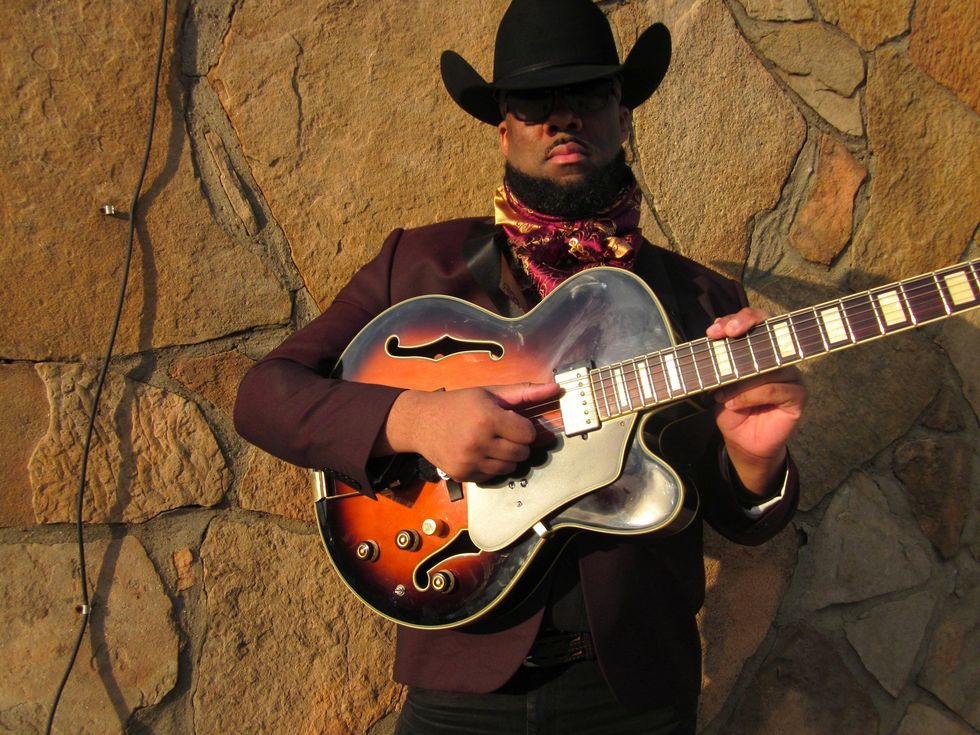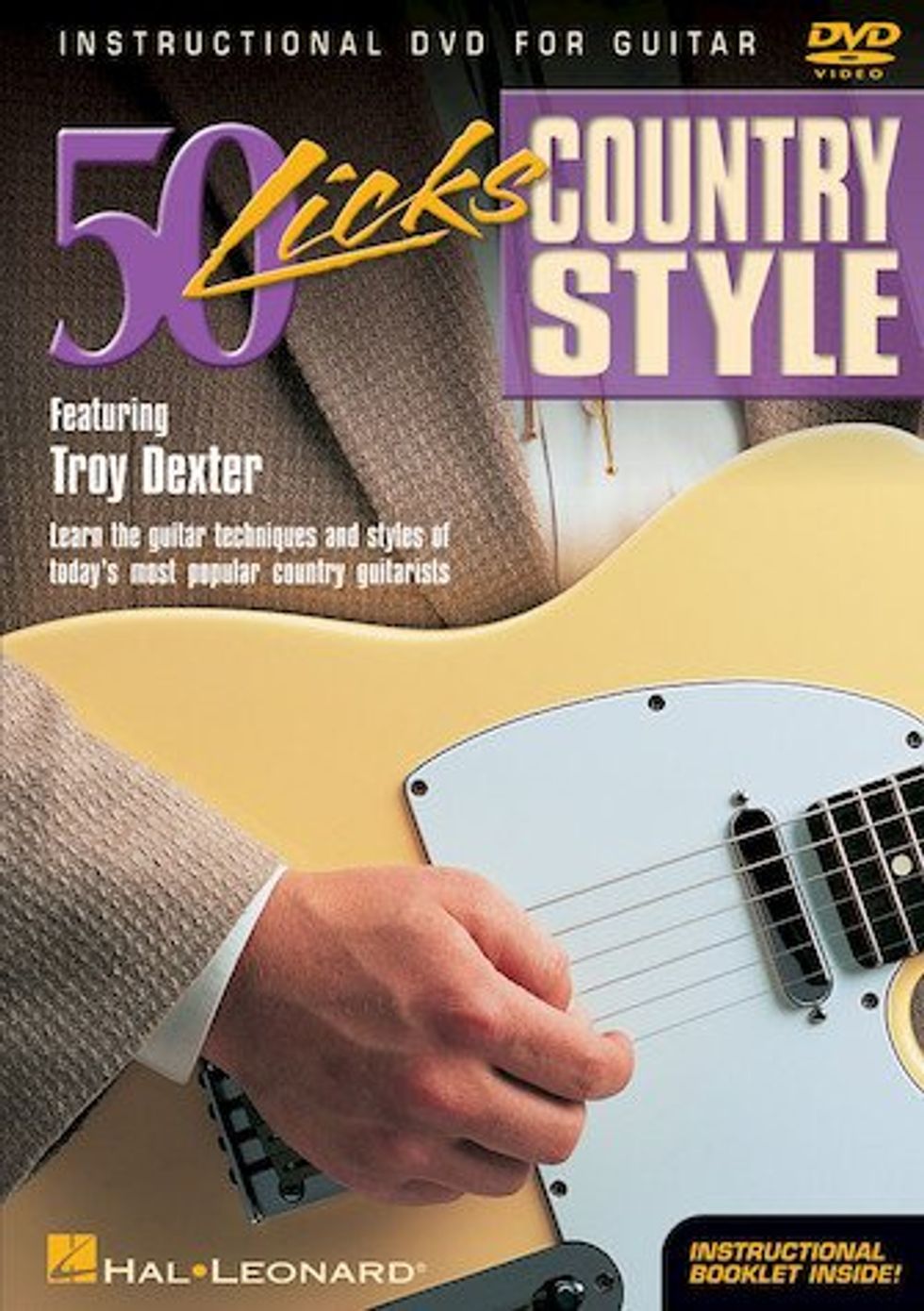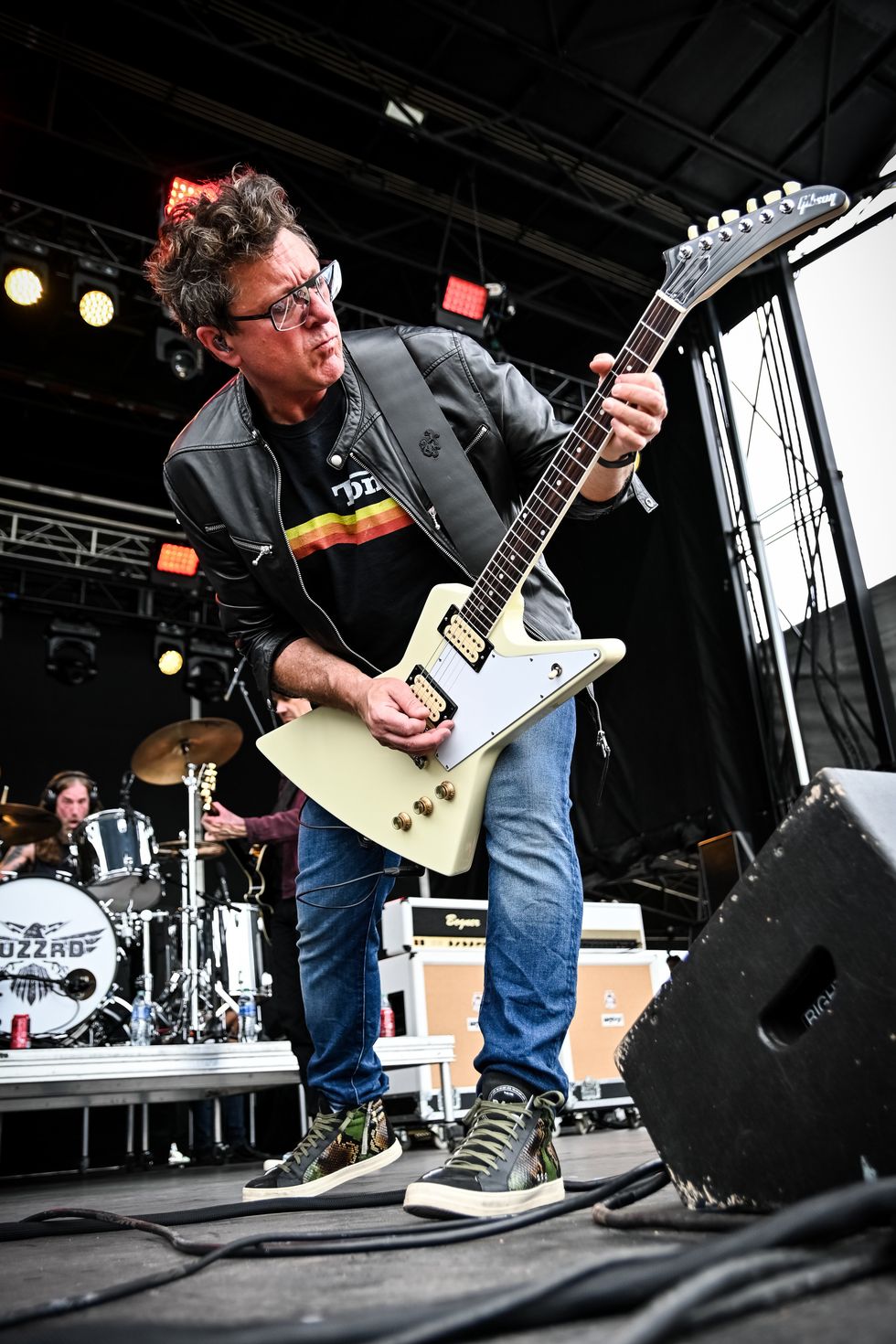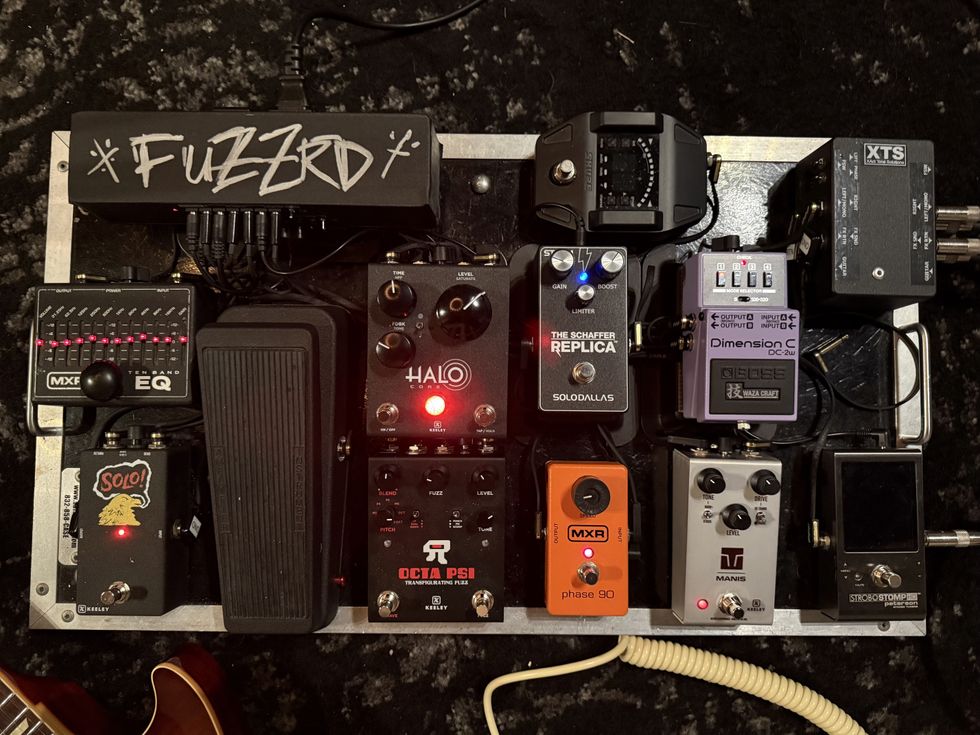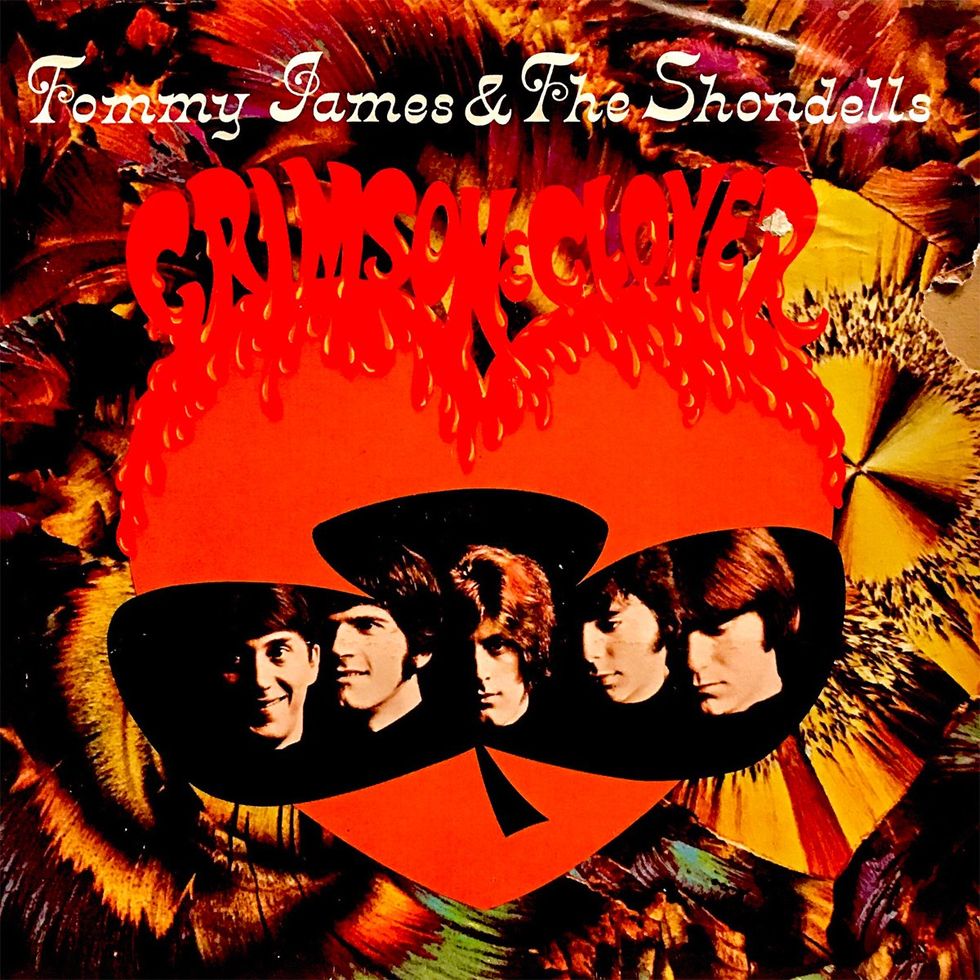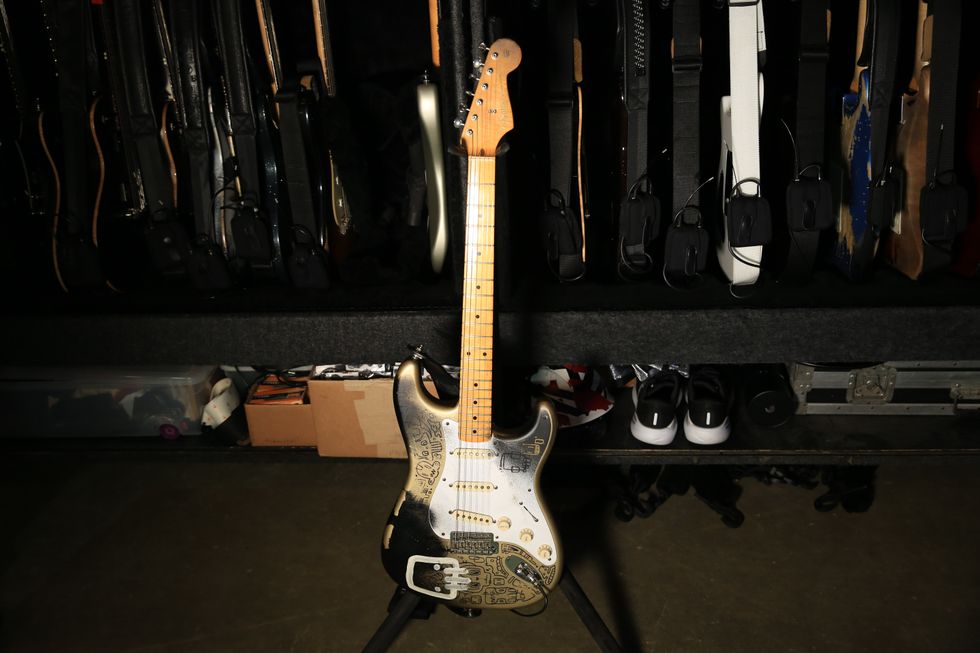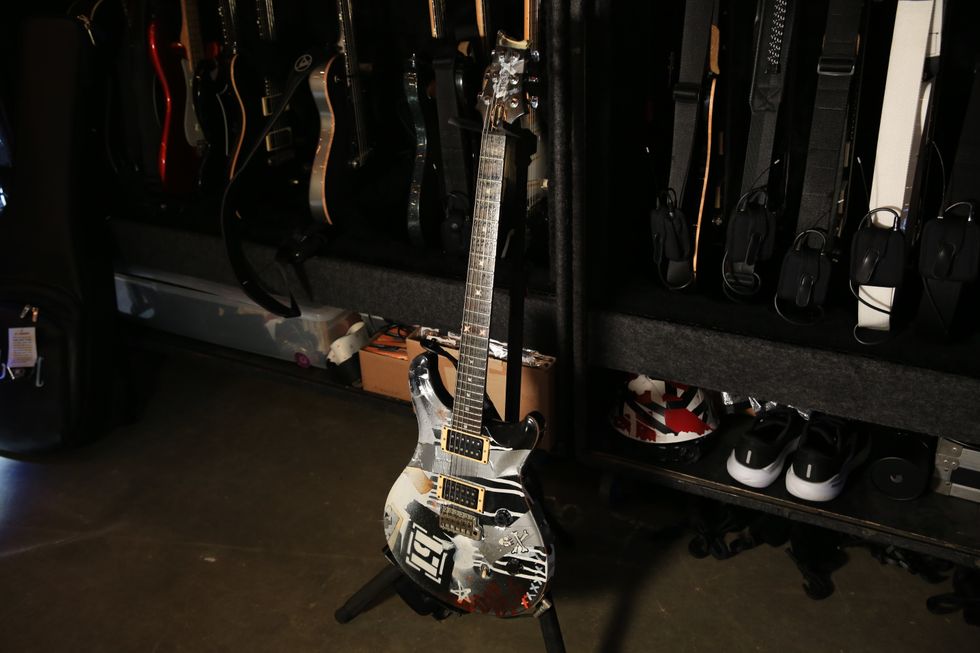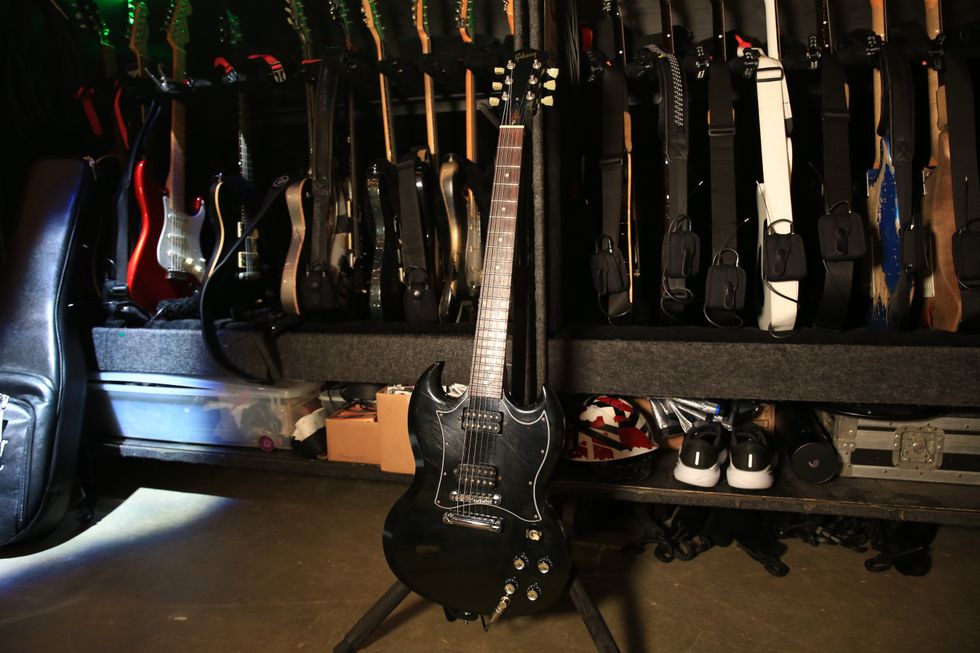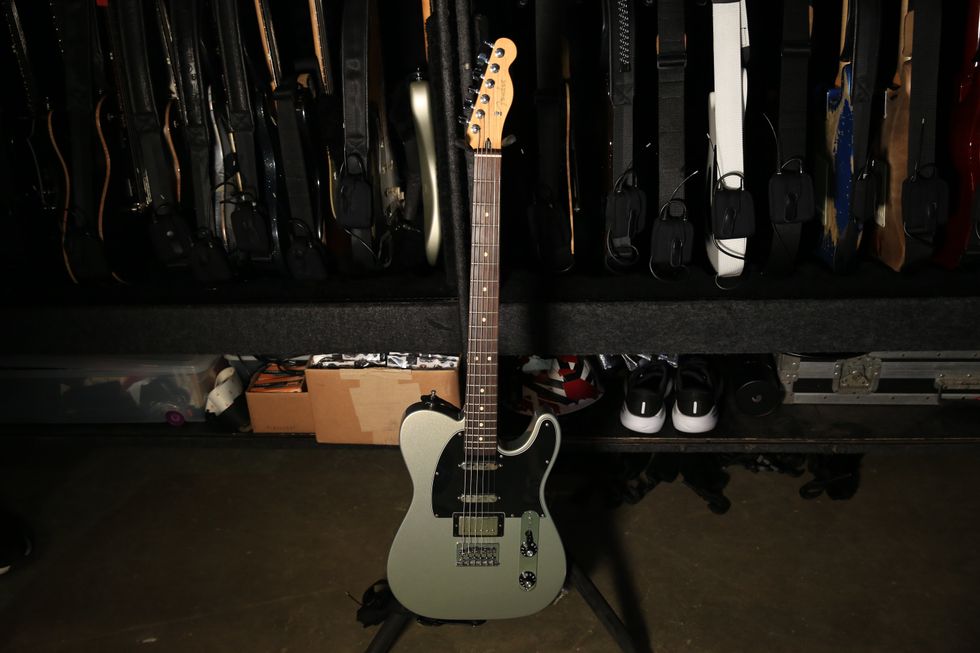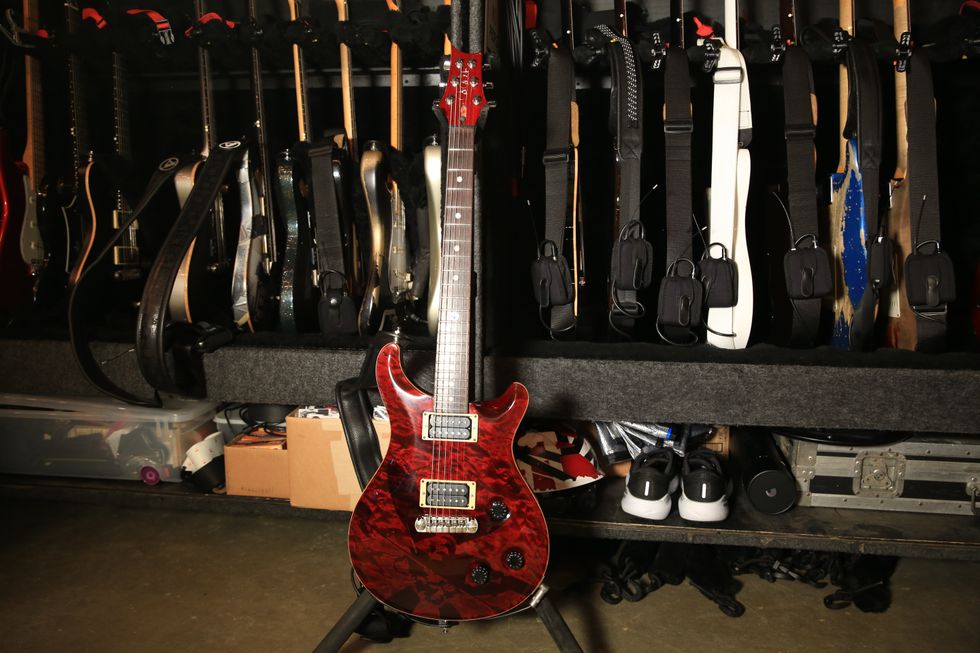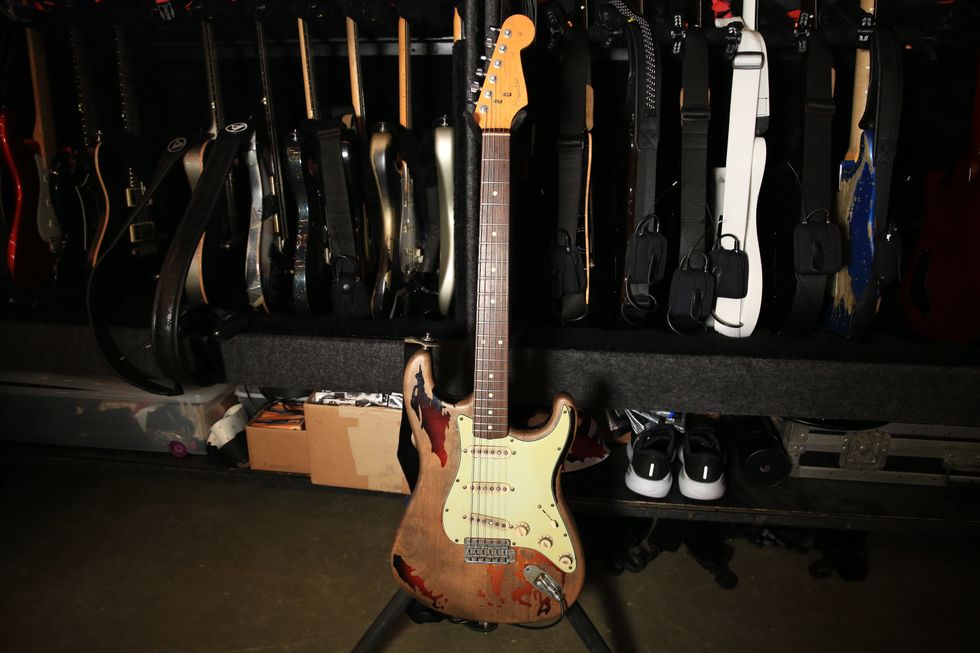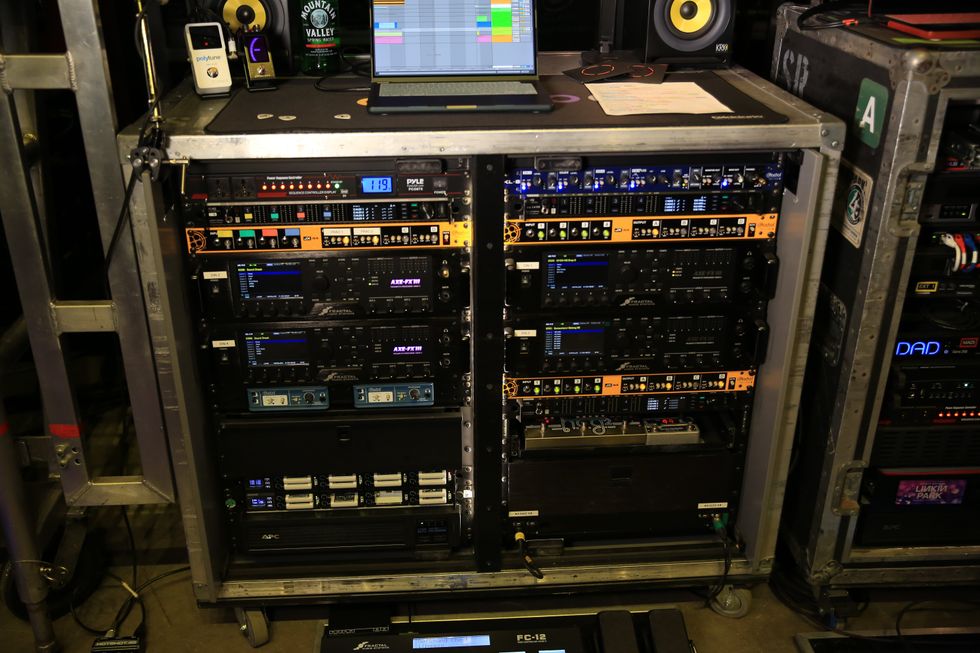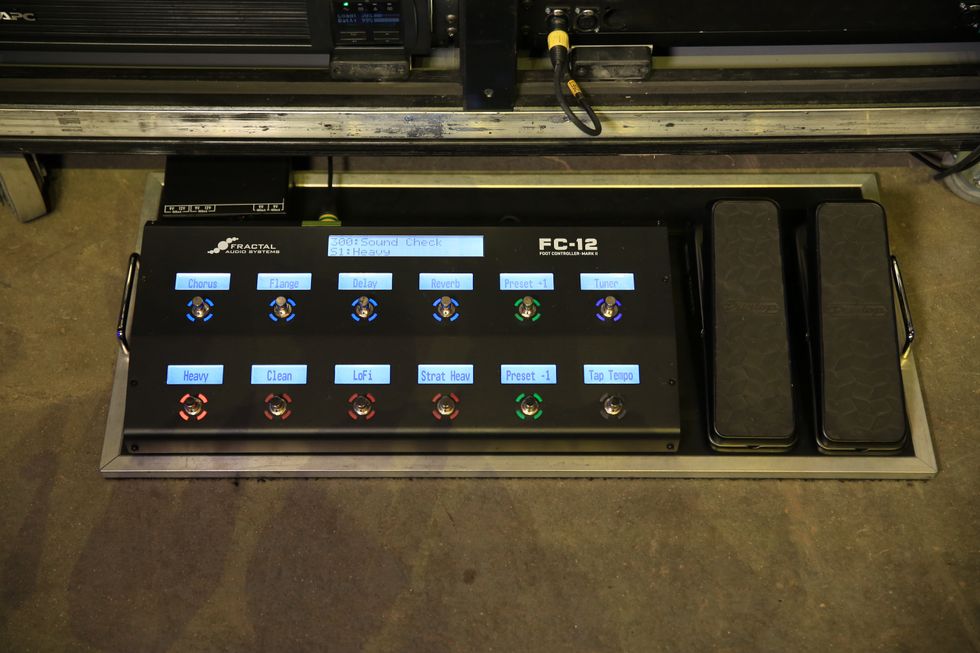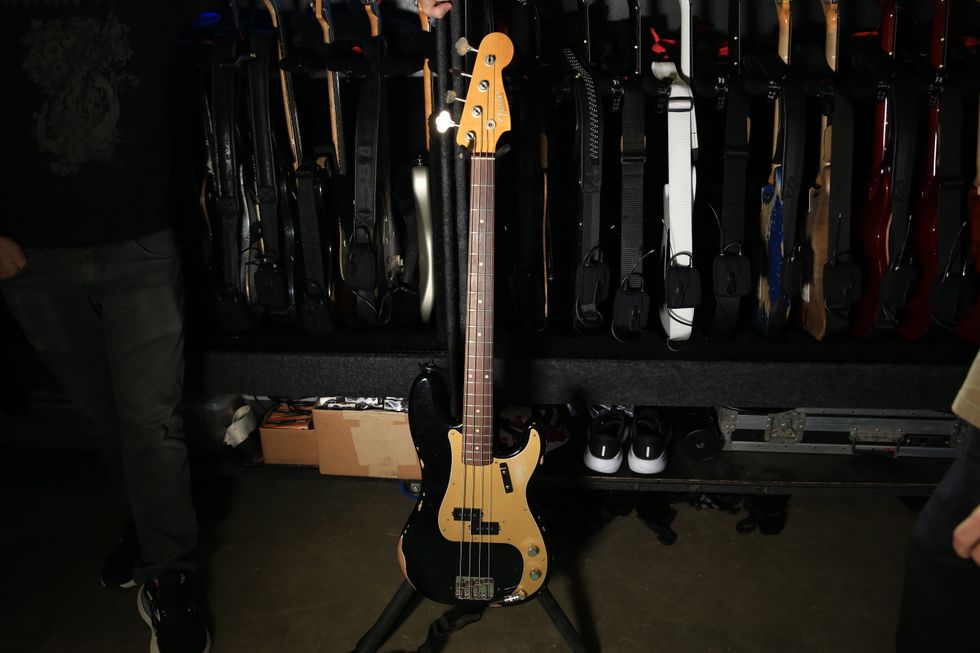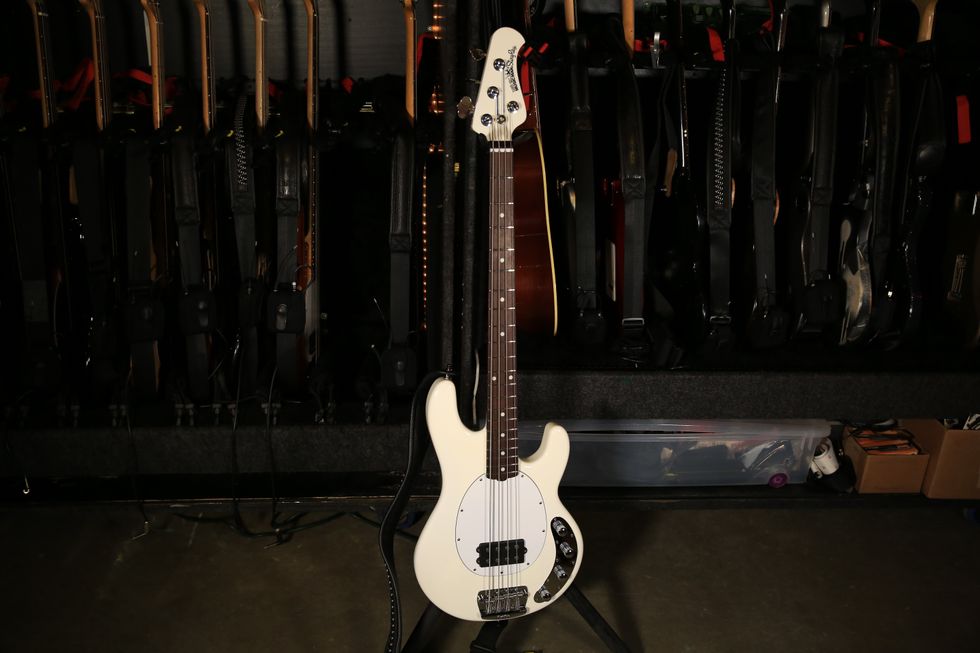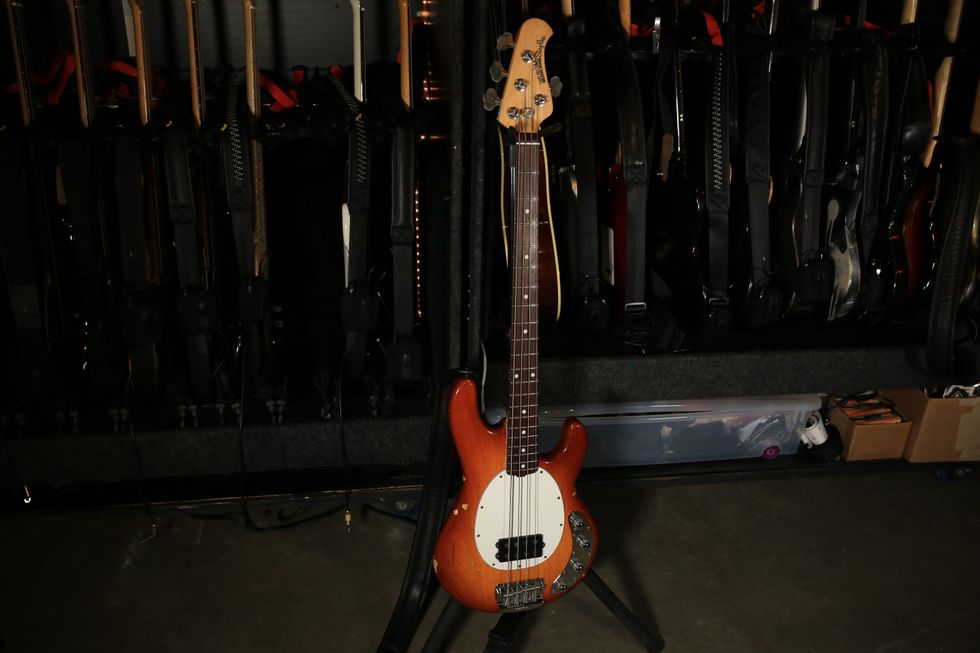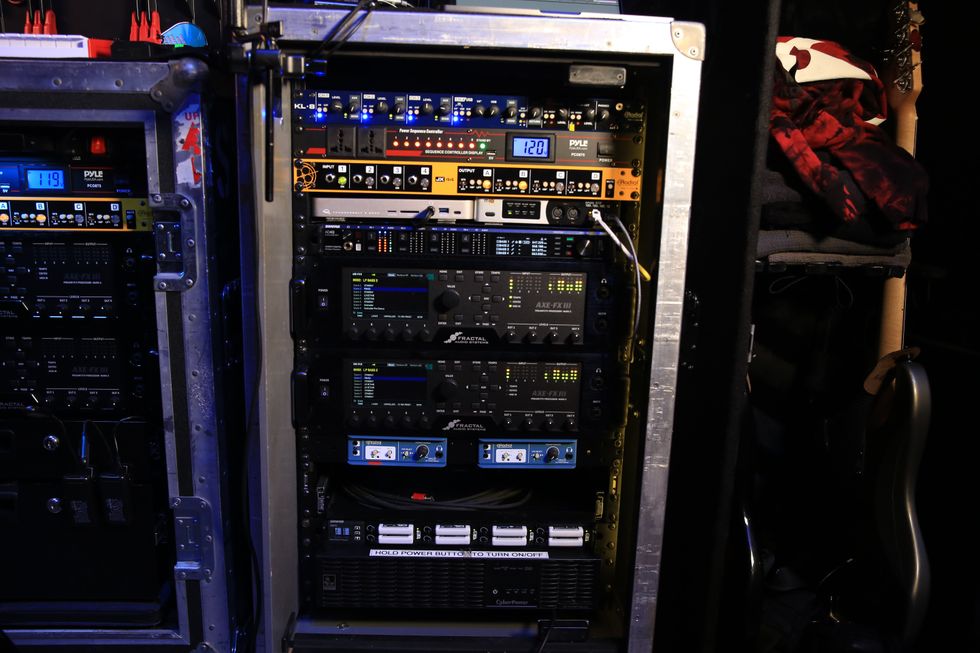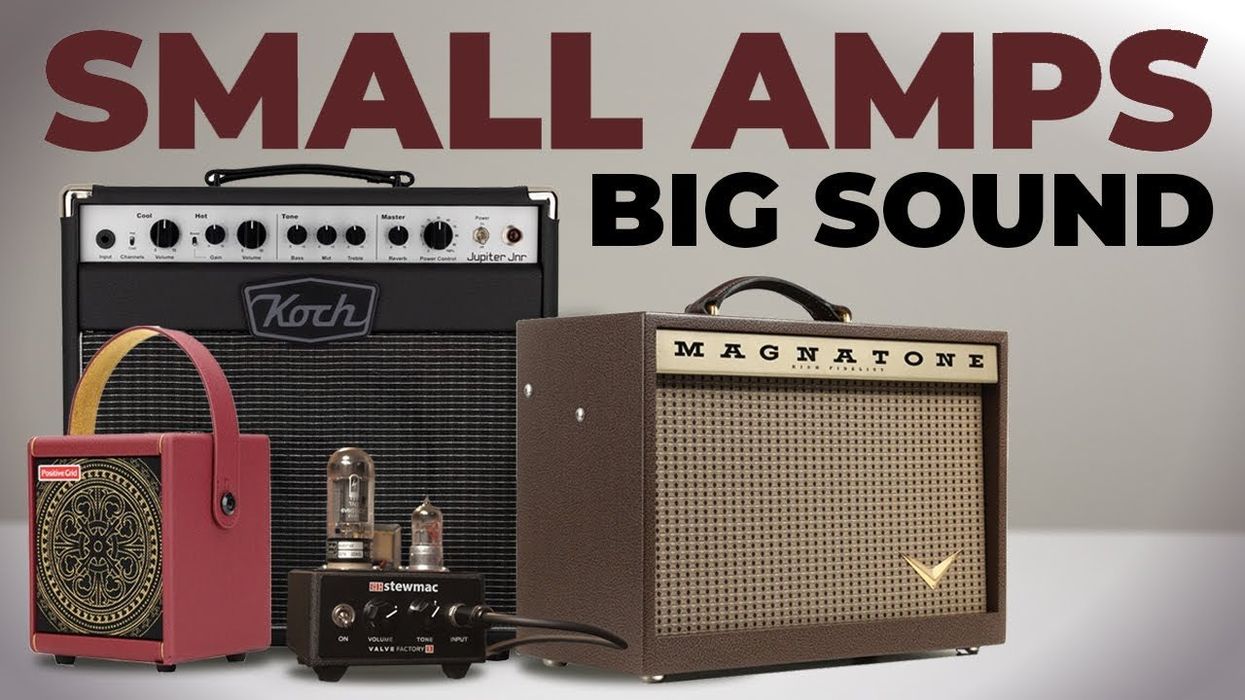DeArmond Jet Star with DeAmond USA GoldTone humbuckers and 1968 Fender Bassman through 2X12 cabinet with Warehouse G12c/s speakers.
Clip #1 — All EQ controls at noon. Volume and Fuzz at noon, two, and three o’ clock.
Clip #2 — All knobs at noon. Pre-fuzz octave position and Tight voice, followed by Post-fuzz position and tight voice, followed by pre-fuzz position and open voice.
RatingsPros:Excellent tone and huge control. Fuzz and Octave circuits can be used separately. Cons: On the slightly expensive side for an octave fuzz. Street: $199 Wampler Fuzztration wamplerpedals.com | Tones: Ease of Use: Build/Design: Value: |
Roger Mayer’s meeting with Jimi Hendrix in early 1967, and the latter legend’s adoption of Mayer’s prototype Octavia, spawned one of the more interesting branches of stompbox evolution. Decades later, octave fuzz is a staple of many pedal manufacturers’ offerings. And though Mayer’s first circuit still inspires many similar effects, octave fuzz remains fertile ground for experimentation beyond the Octavia template. So, it’s nice to see Wampler take a swing at expanding the formula with the Fuzztration: a more versatile variation of the octave fuzz recipe that uses powerful equalization and independent fuzz and octave circuits to achieve uncommon flexibility.
Controlling Your Fuzztration
Many fuzz/octave pedals give you little control over the complex, sometimes fractured, tones they create. Even the early Octavia only had two knobs. But starting with the separation of the octave and fuzz into independent effects, Wampler enhances and extends a player’s control over a potent combination. The 3-band bass/mids/treble boost/cut EQ section is very responsive and has great range. The large fuzz knob, meanwhile, is big enough and smartly situated to enable expressive volume adjustments with your toe. A useful master volume control allows output adjustments when things get hairy.
Two switches further extend the tone-shaping power of the Fuzztration. An octave position switch situates the octave effect before or after the fuzz. (Hendrix usually ran the Octavia after the fuzz.) The tone voice switch provides options for “open” or “tight” settings—the latter of which has more a modern, compressed accent.
The medium-sized enclosure is a little taller than most boxes with similar footprints, which is common within the Wampler line. The graphics wink, perhaps, at Pink Floyd’s The Wall’s theatrical poster (and probably the possible mayhem this pedal is capable of). You can use a 9V or 18V adaptor to power the unit, but there’s also the option to use a 9V battery.
Let It All Out
A Fender Stratocaster and an Orange OR50 with a closed-back 4x12 provided an appropriate and more-or-less-approximate Hendrix-style setup for the most obvious test of Fuzztration’s octave/fuzz capabilities. With the octave effect running in post-fuzz mode and in the open voice position, I found convincing Octavia-style tones with all EQ controls around noon. As with the Octavia, the 1st and 2nd strings of the Stratocaster generate the most potent octave tones, especially on the 12th fret and above.
But by boosting the treble, the Fuzztration brings out more octave, extra clarity, and additional presence. And while the octave is very present in most EQ configurations, the treble EQ is effective enough to almost act as a blend knob for the effect—creating the perception of a considerable boost in octave volume. I’ve always found the rarity of wet/dry octave mix controls on most fuzz/octave pedals frustrating. The treble control’s ability to serve that function to some extent is impressive.
Switching over to the pre-fuzz octave, I noticed a lot less white noise from the single-coils. The octave output, however, is more ring-modulator-like. This effect is even more apparent in the tight fuzz setting with its added compression. Paired with the darker voice of a Gibson Les Paul, these tones are appealingly aggressive and rich—something you might hear at a desert-generator gig populated by lunatics on a Kyuss bender. Even with the darker combination, though, the treble control is powerful enough to provide heaps of extra cut. And with a little push into the 2 o’clock range, the octave really sings. This was extra helpful when I paired the Les Paul and Fuzztration with more contoured, mid-scooped 6L6-based amplifiers.
You can get a lot of mileage using the Fuzztration purely as a fuzzbox. The open voice is thick and pleasingly dark at times, and a lot like a Big Muff in both saturation and attack. The tight configuration is more pointed and punchy.
The octave, too, can be used as a standalone effect. Without the fuzz you hear the upper octave register clearly with a touch of glitchy, irregular grit that almost sounds like a fuzz with a dying battery at times. It sounds great alone. But it’s also excellent augmentation for other fuzz types and sounds awesome with delay set for numerous repeats, creating a field of splattered octave shards.
The Verdict
Most fuzz/octave effects I use do one thing well and tend to lack dynamics. Fuzztration, though, never makes you wonder if the pedalboard space you’ve dedicated to an octave effect is worth it. Fuzztration does classic octave sounds really well. But it opens plenty of other sonic avenues and provides the control, flexibility, and range to move in very creative and unusual fuzz/octave directions.







